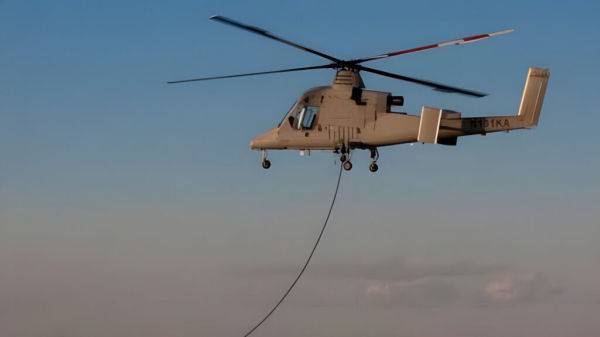It may be hard to believe, but self-flying military helicopters already exist and are undergoing real-world testing. We’re not talking about theoretical concepts or something exciting happening in the near future, as major aerospace players have flown helicopters without anyone at the controls. For example, Lockheed Martin’s Sikorsky division showed a Black Hawk taking off, maneuvering an environment filled with obstacles, and even landing all by itself. Making it possible are its advanced sensors, artificial intelligence, and flight systems that can deal with everything from normal route planning to tricky emergency situations.
These autonomous rotorcraft are predominantly under the control of defense contractors and research programs for now. Still, they offer a compelling look at where both military and civilian aviation might be heading over the next decade. The results of these tests extend beyond military use into emergency medical services, search and rescue operations, and commercial cargo delivery. These systems could operate in dangerous conditions where human pilots face unacceptable risks, while maintaining the operational safety and reliability needed for critical missions.
Inside the tech that makes autonomous helicopters possible
A concept as intricate as self-flying helicopters must be precise and have safety as its main priority. The technology relies on a fusion of cutting-edge systems to keep it stable, safe, and aware of its surroundings. A common system uses a combination of lidar, radar, optical cameras, GPS, and inertial navigation units to create a detailed, constantly updated map of the world around it. The data that’s collected is filtered into powerful onboard computers operating AI-driven flight software that can plot courses, adjust to weather changes, avoid obstacles, and even communicate with air traffic controllers.
Sikorsky’s MATRIX technology is one of the most advanced examples. It allows a UH-60 Black Hawk to execute fully autonomous missions. Simultaneously, the DARPA-backed Aurora Flight Sciences ALIAS program is designed to be a flexible kit that can be installed in existing aircraft like the UH-1 Huey. It can automate important flight duties and execute complex emergency procedures. This dramatically cuts down the workload on human pilots to serve as a safeguard if they become debilitated.
Why you won’t see them at your local dealer anytime soon
Regardless of impressive leaps in autonomous technology, these systems won’t be making an appearance in civilian hangars just yet. Most are tied to military contracts or are highly controlled by demonstration programs. Developers are still working through the kinks to prove long-term reliability under all operational situations. Regulatory roadblocks remain a huge barrier, also. Trying to get certification for an unmanned helicopter for commercial use overpopulated areas is a challenge that goes well beyond the engineering itself.
Still, these advances lay the foundation for a future where fully autonomous rotorcraft could become part of daily life. As air taxi developers enhance self-flying systems and pilot-assist technologies continue to advance, it may not be long before civilian helicopters start to incorporate these capabilities. For now, they show exactly how fast aviation technology is changing, and give us a glimpse of a future where helicopters might not need pilots at all.





